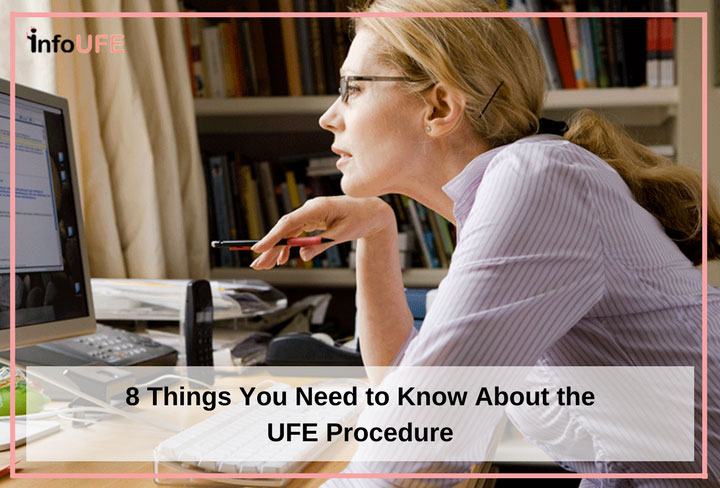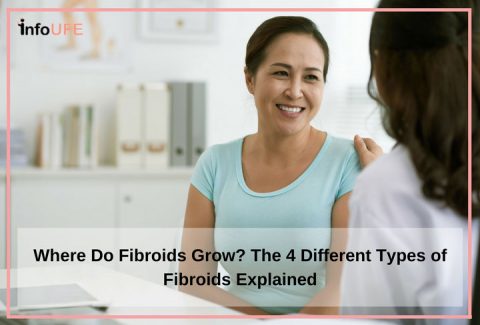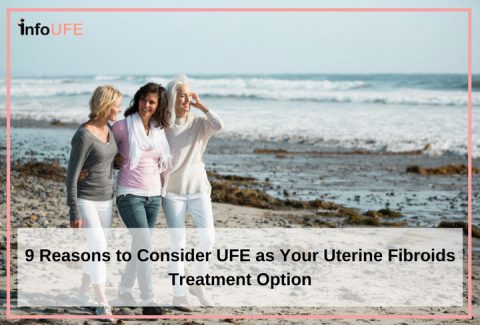
If you have uterine fibroids, or benign tumors of the uterus, and you are considering the uterine fibroid embolization procedure (UFE), also known as uterine artery embolization, you need to read this. There are several reasons you may want to consider UFE as a treatment option for uterine fibroids. There are also some interesting facts that are unique to this minimally invasive procedure compared to more invasive corrective techniques such as surgery.
8 Things to Know if You’re Considering the UFE Procedure
- Interventional Radiologists Perform UFE – Interventional radiologists are physicians trained in the use of x-ray technology to perform procedures inside the body. An interventional radiologist will work with you and your gynecologist to determine if UFE is the right treatment for you. If you want to find a physician to perform UFE, you should seek a specialist board-certified in minimally invasive techniques.
- UFE is Beneficial to a Specific Demographic – Studies have shown that women under 40 may benefit from UFE.i It’s estimated that up to 60% of African American women and 40% of Caucasian women may experience fibroids by the age of 35, and UFE is most commonly performed in women aged 35-50. ii, iii
- UFE is a Well-Established Procedure – Embolization, blocking the flow of blood using special beads, has been used since the mid-1960s in the treatment of tumors. In 1995, it became a treatment for uterine fibroids.iv The Federal Drug Administration (FDA) has approved the particles used in UFE for embolization, and the American College of Obstetricians and Gynecologists state in a policy published in 2008 that UFE is “safe and effective.” iv
- Your Uterus Will Shrink After UFE – The uterus and fibroids become smaller after a UFE procedure. On average, women treated with UFE will see results in uterus shrinkage of 30% within 3 to 6 months after the procedure.vi This occurs because the particles used in the embolization block blood flow to the fibroids. In fact, one study found that new growth of fibroids was lower in women 5 years post UFE compared to women who had myomectomy or surgery that removed one fibroid at a time.vii
- Improved Quality of Life After UFE – Studies have shown that women who’ve undergone a UFE procedure have reported significant relief and an improved quality of life equally in comparison to women who have had major surgery to treat their uterine fibroids.viii
- UFE Uses Contrast Dye – Contrast dye is used to determine whether the catheter is in the correct location during the procedure. While this dye is safe for many, if you have kidney disease, an allergy to contrast, or are on certain medications (such as Metformin), you’ll want to be sure to speak with your medical providers to inform them before undergoing a UFE procedure.x
- Uncertain Impact on Fertility – The entire impact of UFE on fertility is unclear, but there are reports of women getting pregnant after UFE. Recent studies show a 50% success rate of pregnancy after UFE.xi You should discuss your particular situation with your medical provider.
- You Can Recover From UFE Within 2 Weeks – The typical recovery after hysterectomy is 6 weeks, and myomectomy is between 2 and 6 weeks.xi UFE recovery time can be as little as 2 weeks. You may experience 4 – 5 days of cramping, fatigue, perhaps nausea, or a fever.xii
Uterine fibroid embolization is a minimally invasive procedure that can be a successful way to treat uterine fibroids. You should schedule an appointment with an interventional radiologist to determine if UFE is a viable treatment option for your case.
Sources:
i McLucas, B. and W.D. Voorhees, 3rd, Results of UAE in women under 40 years of age. Minim Invasive Ther Allied Technol, 2014. 23(3): p. 179-83
ii Baird, D.D., et al., High cumulative incidence of uterine leiomyoma in black and white women: ultrasound evidence. Am J Obstet Gynecol, 2003. 188(1): p. 100-7
iii Mara, M. and K. Kubinova, Embolization of uterine fibroids from the point of view of the gynecologist: pros and cons. International Journal of Women’s Health, 2014. 6: p. 623-9 http://www.sirweb.org/patients/uterine-fibroids/
vi Torre, A., et al., Uterine artery embolization for severe symptomatic fibroids: effects on fertility and symptoms. Hum Reprod, 2014. 29(3): p. 490-501
vii Ananthakrishnan, G., et al., Randomized comparison of uterine artery embolization (UAE) with surgical treatment in patients with symptomatic uterine fibroids (REST trial): subanalysis of 5-year MRI findings. Cardiovasc Intervent Radiol, 2013. 36(3): p. 676-81
viii van der Kooij, S.M., et al., Uterine artery embolization vs hysterectomy in the treatment of symptomatic uterine fibroids: 5-year outcome from the randomized EMMY trial. Am J Obstet Gynecol, 2010. 203(2): p. 105 e1-13
x Radiology, U.o.W., Conditions which may contraindicate the use of IV iodinated Contrast
xi Khan, A.T, Shehmar, M., Gupta, J.K. Uterine fibroids: current perspectives. International Journal of Women’s Health, 2014. 6: p. 95–114.
xii Clinic, M., Myomectomy
xiii Mara, M., et al., Midterm clinical and first reproductive results of a randomized controlled trial comparing uterine fibroid embolization and myomectomy. Cardiovasc Intervent Radiol, 2008. 31(1): p. 73-85


